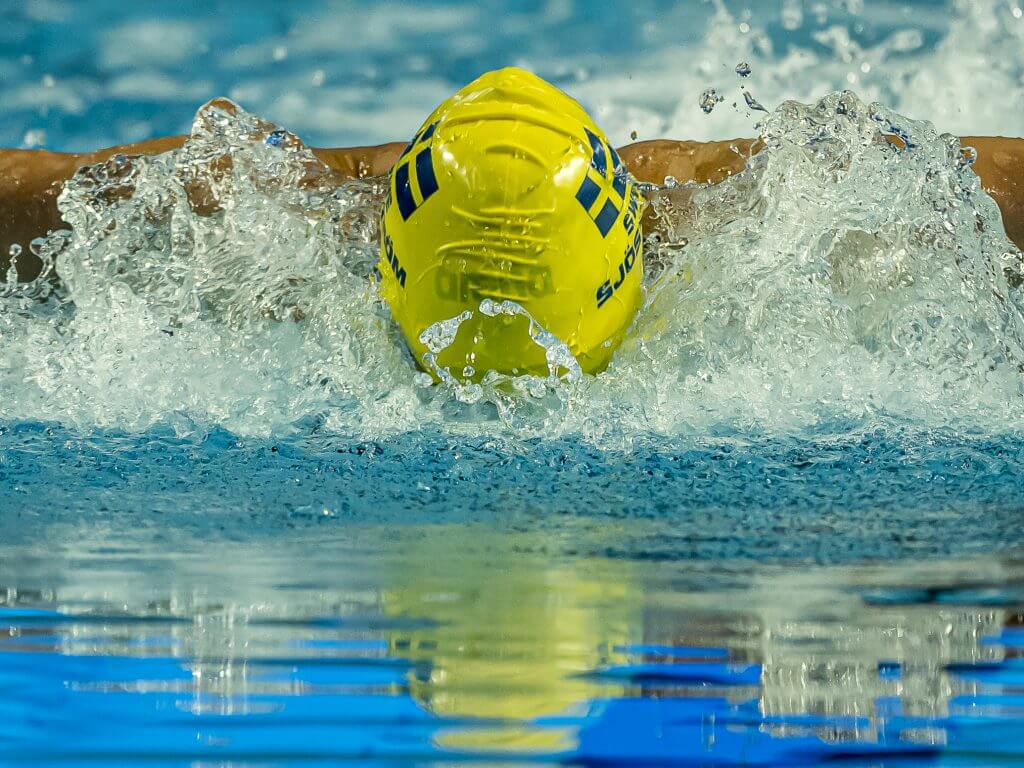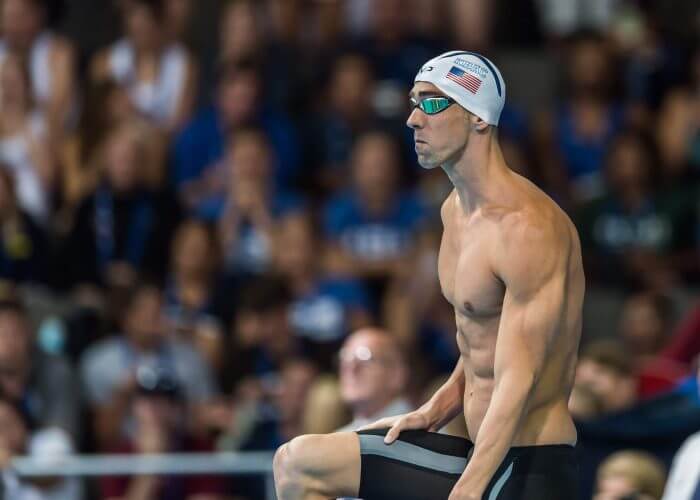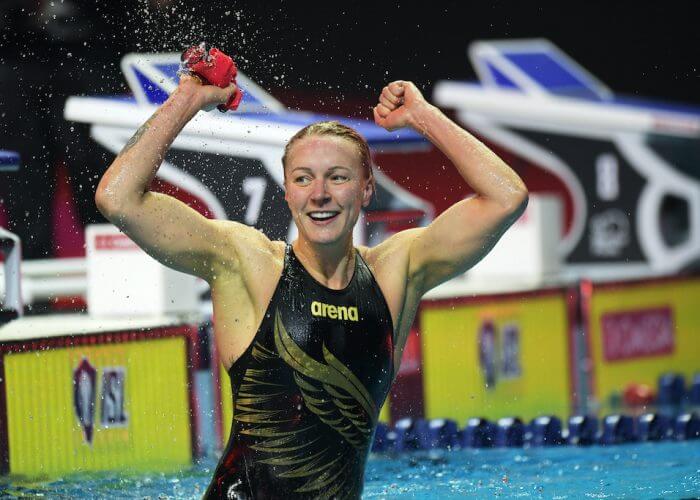Will 2020 Be The First Year Without World Swimming Records Since 1896?

The prospect of 2020 becoming the founder member of the “No World Swimming Records Club” has grown with every passing COVID-19 postponement and cancellation in sport.
There has never been a year without a world swimming record of some kind since the inaugural 1896 Olympic Games. This might be it.
In terms of long-course records, 2010, the first year of the ban on shiny bodysuits, was the first in which there were no long World records since the 50m pool became the only official measure of global standard in 1956. Before that, there had only been three years in which no global marks were established in Olympic events since the first Olympic Games in 1896 (and since FINA first registered ‘worlds (sic) records’ after its foundation in 1908).
In each of those three years of meagre harvest – 1913, 1917 and 1945 – World swimming records were, in fact, established in events made obsolete long ago, including the likes of 300 yards and 500 yards freestyle, 1,000m freestyle 400m backstroke, 400m and 500m breaststroke and 3×100 yards and metres medley (before the birth of butterfly as the court stroke).
For a number of reasons, the modern era could be said to have begun with the Melbourne 1956 Olympic Games. Before that, counting the prevailing and current Olympic swimming programs, the ‘missing years’ were 1913, a year after the Stockholm Olympic Games and on the cusp of the First World War; 1917, the last full year of the war; and 1945, the last year of the Second World War, VE (Victory in Europe) Day marked on May 8, the world in rehabilitation for some years afterwards.
In that context, shiny suits topped both World Wars when it came to swimmers struggling to swim pioneering times. Going into the World short-course Championships of December 2010, no World swimming records had fallen. In Dubai, three records fell, in the 400m medley, courtesy of a 3:55.50 from Ryan Lochte; and the men’s and women’s 4x200m freestyle standards, to Russia and China, respectively.
Those latter two nations, coincidentally, top of the league of doping offences in swimming, all-time, notwithstanding the GDR and its record of no positives officially but plenty registered in internal tests at the Kreischa laboratory in Saxony accredited by the International Olympic Committee (IOC). The results were recorded to hide not to reveal State Plan 14:25.

Michael Phelps – Photo Courtesy: Peter H. Bick
Among men, 10 World swimming records set in shiny suits remain on the books 10 or more years on. Among women, who retain body/torso suit coverage and compression, albeit with textile apparel, the count is just two, both among times that look extremely resilient yet in the league of the toughest non-textile nuts to crack.
The list, with four Michael Phelps entries (he set a record 39 world records – 29 individual, 10 relay – in his career) of surviving shiny suits standards in full:
- 50m freestyle 20.91 César Cielo (BRA) 18 December 2009 National Championships São Paulo, Brazil
- 100m freestyle 46.91 César Cielo 30 July 2009 World Championships Rome, Italy
- 200m freestyle 1:42.00 Paul Biedermann (GER) 28 July 2009 World Championships Rome, Italy
- 400m freestyle 3:40.07 Paul Biedermann 26 July 2009 World Championships Rome, Italy
- 800m freestyle 7:32.12 Zhang Lin (CHN) 29 July 2009 World Championships Rome, Italy
- 200m backstroke 1:51.92 Aaron Peirsol (USA) 31 July 2009 World Championships Rome, Italy
- 400m medley 4:03.84 Michael Phelps (USA) 10 August 2008 Olympic Games Beijing, China
- 4×100m freestyle relay3:08.24 (USA) 11 August 2008 Olympic Games Beijing, China
(47.51)Michael Phelps
(47.02)Garrett Weber-Gale
(47.65)Cullen Jones
(46.06)Jason Lezak - 4×200m freestyle relay 6:58.55 United States 31 July 2009 World Championships Rome, Italy
(1:44.49)Michael Phelps
(1:44.13)Ricky Berens
(1:45.47)David Walters
(1:44.46)Ryan Lochte - 4×100m medley relay 3:27.28 United States 2 August 2009 World Championships Rome, Italy
(52.19)Aaron Peirsol
(58.57)Eric Shanteau
(49.72)Michael Phelps
(46.80)David Walters
Women:
- 200m freestyle1:52.98 Federica Pellegrini (ITA) 29 July 2009 World ChampionshipsRome, Italy
- 200m butterfly 2:01.81 Liu Zige (CHN) 21 October 2009 Chinese National Games Jinan, China
2020 World Swimming Record Prospects
Mid-June and the best swimmers in the world would now be on Mare Nostrum Tour or heading into Olympic trials in the United States and Australia on the way to the big showdown at Tokyo 2020. The Olympics having been shunted a year ahead to July 2021 by the COVID-19 pandemic, there’ll be no world-class racing this northern summer, no major internationals during the rest of the year, a series of speed tests and the International Swimming League, all being well, about the best of any action we might expect.
Never say never, of course, but the prospect of pioneering standards this year, after most world-class swimmers spent at least two months out of proper training in water, look somewhat slender.
If they are to fall, where might they come from?
Track and field athletes have been able to replicate normal training far more closely than swimmers have during lockdown. In Norway, that showed this week when Karsten Warholm ran the fastest 300m hurdles time (33.78sec) in history in an empty stadium in Oslo dashing past a few cardboard cutouts in the stands and cheered on from balconies of home that overlook the stadium.

Sarah Sjostrom – Photo Courtesy: Gian Mattia D’Alberto/LaPresse
In neighbouring Sweden, there’s a very fast fish who has been able to train in the pool throughout the COVID-19 pandemic: Sarah Sjostrom recently explained to Liz Byrnes why that experience wasn’t ‘business as usual’. There’s also this: she intends to be around for many years yet – and needs to be in no hurry to take down world records.
Even so, she is among those who have managed to keep up a regular swimming routine, courtesy of controls at pools that had to adjust practices during lockdown but did not shut their doors to elite athletes.
With four current World records to her name, Sjostrom tops the standard-bearers chart among women, the closest to her, with three apiece, counting relays, fellow Olympic champions Katie Ledecky (400, 800, 1500m free) and Lilly King (50 and 100m breaststroke and 4x100m medley) and their World-champion USA team-mate Regan Smith (100, 200m backstroke and medley relay)
Sjostrom’s standards:
- 50m freestyle 23.67 Sarah Sjöström (SWE) 29 July 2017 World Championships Budapest, Hungary
- 100m freestyle 51.71 Sarah Sjöström 23 July 2017 World Championships Budapest, Hungary
- 50m butterfly 24.43 Sarah Sjöström 5 July 2014 Swedish Championships Borås, Sweden
- 100m butterfly 55.48 Sarah Sjöström 7 August 2016 Olympic Games Rio de Janeiro, Brazil
She also holds two world short-course marks:
- 200m freestyle1:50.43 Sarah Sjöström 12 August 2017 World Cup Eindhoven, Netherlands
- 100m butterfly 54.61 Sarah Sjöström 7 December 2014 World Championships Doha, Qatar
Do those times look hard to beat? Yes: they’re world records.
Do they look harder to beat this oddest of seasons? Absolutely.
Which is the most vulnerable? Probably the s/c 100 ‘fly.
Sjostrom is not alone, of course, when it comes to swimmers who may yet surprise us this year, given a chance, but with a focus on steady build up and then Olympic preparations for a shifted Games ahead of all, COVID-19 2020 could well become the first year in history in which no world swimming records of any kind were established.




Interesting…..I wonder how 2021 will turn out.? with training ‘disrupted’ new methods of land training an a reasessment of current training techniques may result in a large number of time drops next year. ………use the current ‘down’ time as an opportunity to reasess but aim to improve.
Also thoughts on the long term effects on the sport and sport in general….will this year result in an overall decrease in sports participation in the comming years. As youngsters have spent more time on virtual reality, mobiles and other non physical or face to face activities??
Yes, good questions Peter, I think there will be some who simply don’t return to sport and there’s going to be a smallish hole in the ocean instead of the next wave of talent because of the kids harnessed to momentum they were then forced to let go of. There’ll be some coaches, too, who don’t make it back or move on, some of those shifts will change the dynamic in programs. The best supported and funded will fare better than most on the climb back, of course – as will those who use it as fuel … and those for whom all of this is a mere blip in the context of much longer, wider, brighter careers and pathways ahead.
Yes, interesting to see what happens……
yes corona kills